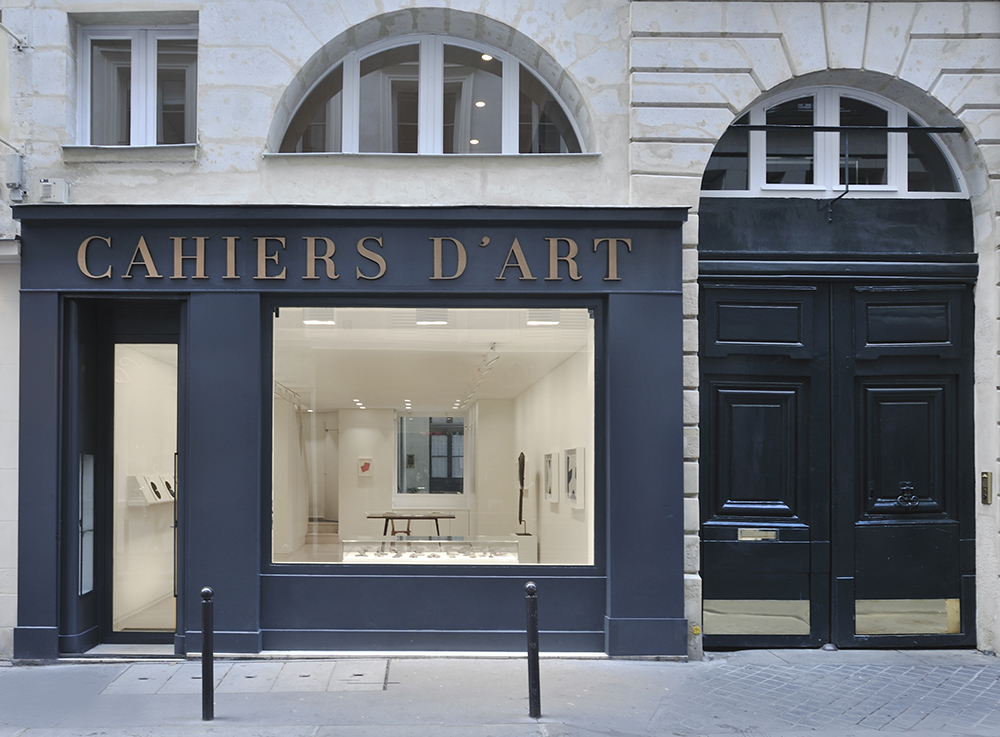The Only Picasso Anything You’ll Ever Need
Staffan Ahrenberg, who recently acquired the French arts and literary journal Cahiers d’Art, still remembers the first Pablo Picasso painting he fell in love with. “The one we had at home [as a child],” he says. “Naked Woman in a Rocking Chair.” Painted in 1956, almost half a century after Picasso pioneered Cubism and sparked the major Western art trends of the 20th century, Naked Woman is characteristically fragmented. Yet the violent treatment of the woman’s body hints at influence from Willem de Kooning’s Women series painted shortly before. After all, in his over seven-decade long career as a painter, in which he produced thousands of drawings, paintings, prints, and sculptures, Picasso’s style, though distinct, pulsated with the art world’s wider tendencies, sung of his own torrid affairs ,and seethed with his strong reactions to political atrocities.
But to date there’s only one place to see them together: the Zervos Picasso catalog, assembled by Picasso’s friend and collaborator Christian Zervos. Cahiers d’Art, the Paris-based publishing house Zervos founded in 1926, released the 33-volume catalogue raisonné between 1932 and 1978. After Zervos’s death in 1970, Cahiers remained dormant until movie producer and art collector Ahrenberg saw a tiny sign for it walking down Paris’s Rue de Dragon in 2010. On impulse, he walked in and bought it from the owner. “It happened in less than one second,” remembers Ahrenberg, who relaunched the publication in October of 2012. “My father had Cahiers d’Art at home when I was a teenager, but I hadn’t thought of it since then in my life since.” He adds, “Maybe I was searching for it unconsciously.”
It was, however, a deliberate move on Ahrenberg’s part to revive Zervos’s Pablo Picasso, the most comprehensive and famous catalogue raisonné on the artist in existence. “When you see 16,000-plus images of Picasso, it’s not only important for art historians, it’s important for anyone who’s interested in art,” describes Ahrenberg. Flipping through the pages, it’s possible to perceive Picasso’s near-daily impulses, as well as momentous events in his life. “When he was in love with a new woman, he’d paint a series of tantalizing or erotic paintings or drawings,” says Ahrenberg. “[It’s apparent] when there were certain political events happening in the world… You can see the world through his world.”
Though one might expect color would be crucial to such a thorough documentation, Zervos’s Pablo Picasso is completely in black and white. “The reproduction of color is a debatable thing,” describes Ahrenberg. “In seeing Picasso’s work reproduced… the line is very important, and the shade [in black and white] better shows the proportions than if the colors were even five percent mis-reproduced.”
To distribute the catalog, Cahiers worked with Sothebys, which is selling the catalog for $15,000. Ahrenberg turned to the international auction house, he explains, “to make it widely available…for collectors, scholars, libraries, all kinds of people.”
The focus now is on expanding Cahiers. A gallery by the same name now resides next door to the original publishing house. Currently on view is an exhibition of Philippe Parreno’s drawings, up through January. They are also starting to work on a number of books for early next year, according to Ahrenberg, who speaks of the journal’s universal appeal. “When people see Cahiers d’Art for the first time, they have an immediate loving reaction,” he says. “They see the history. They see what it is. It transcends generations.”
PABLO PICASSO BY CHRISTIAN ZERVOS WILL BE RELEASED BY SOTHEBY’S ON DECEMBER 15. COPIES ARE CURRENTLY AVAILABLE FOR PRE-ORDER. FOR MORE INFORMATION ON CAHIERS D’ART, VISIT THEIR WEBSITE.







